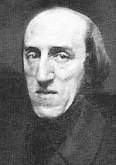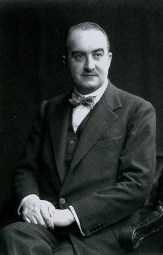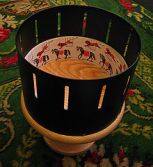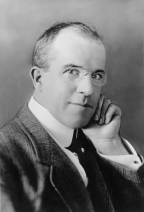Use pioneers of animation to explain the principles of stop motion animation
Joseph Plateau-
Joseph Plateau studied and focused on the human eye but especially the Retina as it the part of the eye that lets you see colour.
In 1829 Plateau and his sons introduced the Phenakistiscope (spindle viewer). It became popular as a toy for children, however, although it is well known, the Phenakistiscope was not the first optical amusement able to conjure-up the illusion of movement. The Phenakistoscope uses the persistence of vision to create an illusion of motion. It used two discs mounted on the same axis. The first disc had slots around the edge, and the second had drawings of action, drawn around the disc in circles. The Phenakistiscope was able to create the illusion of life more than 60 years before film. ‘Madou’ would paint the basic image then after Plateau would calculate the “stills”. These”stills” are seen with the illusion of movement through the slots of a turning disc placed in front of the translucent discs. When viewed in a mirror through the disc’s slots, the pictures on the second disc will appear to move.
Discs are made transparent with the use of wax paper and then coloured from behind.
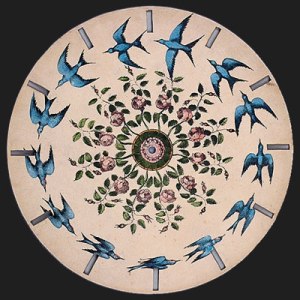
http://users.telenet.be/thomasweynants/plateau-intro.html- 2003 Thomas Waynants
Horner was a British Mathematician and published a mode of solving numerical equations of any degree now known as Horner’s degree.
In 1834 William Horner created the Zoetrope. Zoetrope is a device that produces an illusion from a rapid succession and is still used today. Some would say that is just an improvement on the Phenkitascope but mainly and most importantly it lead to animation being viewed simpler. It did this by having small slits on the side where a person could look inside. This gave it a better effect on the human eye than the Phenkitascope.
The Zoetrope uses the persistence of vision principle to create an illusion of motion.
It works by using a drum with an open top, supported on a central axis. Then a series of pictures on strips of paper are placed around the inner bottom of the drum. After that, Slots are cut at equal distances around the outer surface of the drum, just above where the picture strips were positioned. This is very effective and cleverly designed. To create an illusion of motion, the drum is spun; the faster the rate of spin, the smoother the progression of images. It is designed so that more than one person could view the Zoetrope .The technique that Horner uses here is Beta Movement. The Beta Movement is an optical illusion. It was first described by Max Wertheimer in 1912. It is a series of static images on a screen that creates the illusion of a flowing scene. This happens when the frame rate is faster than 10-12 separate images per second.
http://joshwhitelock.blogspot.co.uk/p/william-horner.html- Josh Whitelock 2011
Photographer, teacher and artist, Emile Reynaud is known as the inventor of the Praxinoscope (in 1877), of the Optical Theatre (in 1888) and as the creator of the firsts animated cartoons. He was one of the pioneers of cinema.
The Praxinoscope is an advanced version of the zoetrope. It used a strip of pictures situated around the inner surface of a spinning cylinder. The Praxinoscope improved on the zoetrope by replacing its narrow very slits with an inner circle of mirrors. They were placed so that the reflections of the pictures appeared more or less stationary in the positioned as the wheel was turned. A person would look in the mirrors and then see a rapid ‘succession’ of images producing the illusion of motion, with a brighter and less distorted picture than the zoetrope.
http://en.wikipedia.org/wiki/Charles-Émile_Reynaud- 2008, author unknown
Eadweard’s famous work began when he was hired by Lenard Sandford in 1872 to photograph horses. Sandford was convinced that when a horse runs, all four hooves leave the ground at one point. Muybridge set up a row of cameras with tripwires, each would trigger a picture for a split second as the horse ran by. The results showed that indeed, all four hooves do leave the ground at one point. The prove this Eadweard used Stop- Frame Animation. This is a cinematic process or technique. This process makes static objects look like they’re moving by simply taking lots of frame shots of the object, moving it slightly every time This technique is commonly used in clay-mation and puppet-based animation.The more frames the more detail and focus there is on the object.
Eadweard invented the Zoopraxiscope. Eadweard found a way to project his silhouettes onto a screen. They were first shown to the public in 1882. It is known as the first ever moving picture. Years later his work was quoted as a massive inspiration in the invention of the modern cine-camera by Thomas Edison.
http://www.bbc.co.uk/photography/genius/gallery/muybridge.shtml- Extract from ‘wall to wall’. Author unknown
Thomas Edison-

In his early years Thomas Edison started publishing his own newspaper.
In 1869, Edison developed his first invention after moving to New York. He invented an improved stock ticker. The Stock Telegraph and Gold Company were so pleased they paid Edison $40,000 for the rights. At only 22 years old, Edison was a success so he quit his work as a telegrapher to focus on full-time inventing.
Thomas Edison set up a lab in Menlo Park. He developed many products such as; the telegraph, photograph, electric light bulb , alkaline storage batteries and Kinetograph (which is a camera). Edison built an independent industrial research facility incorporating machine shops and laboratories. Western Union encouraged Edison to develop a communication device that could become bigger and be competition against Alexander Graham Bell’s telephone. Thomas Edison refused but in 1877 Edison invented a method for recording sound. This was called the Phonograph. This invention brought him worldwide fame. Another technique that Edison used was Stopping. ‘Stopping’ is in camera editing, where you film something, stop the camera, change your surroundings and film again. An example of Edison using ‘Stopping’ is in ‘The execution of Mary Queen of Scots’ in 1895.
alkaline storage batteries and Kinetograph (which is a camera). Edison built an independent industrial research facility incorporating machine shops and laboratories. Western Union encouraged Edison to develop a communication device that could become bigger and be competition against Alexander Graham Bell’s telephone. Thomas Edison refused but in 1877 Edison invented a method for recording sound. This was called the Phonograph. This invention brought him worldwide fame. Another technique that Edison used was Stopping. ‘Stopping’ is in camera editing, where you film something, stop the camera, change your surroundings and film again. An example of Edison using ‘Stopping’ is in ‘The execution of Mary Queen of Scots’ in 1895.
http://www.history.com/topics/inventions/thomas-edison- 2014 A+E Network Televsion
Use developers of animation to explain techniques of stop motion animation.
J. Stuart Blackton
Blackton was a Brit and commonly known as the father of American animation. James was an Anglo- American film producer. He was best known for making the first silent film that incuded animated sequences: ‘The enchanted drawing’ (1900). The film shows a man drawing a cartoon face on an easel. He draws a hat on the head and then a bottle of wine, a glass and a cigar. He then takes objects off the canvas and they go back into the image.
http://www.americaslibrary.gov/sh/animation/sh_animation_blcktn_2.html- The Library of Congress 2000
Aside from that the first instance of Stop motion technique can be credited to J. Stuart Blackton and Albert E. Smith for ‘The Humpty Dumpty Circus’ in 1898.
Movement and Visualisations-

Movement is the acceleration and deceleration of an inanimate object to determine the speed of something. For example, if there was a scene with a car crash, the length that the car is moved each time would gradually increase and then when the crash occurs the length would be longer and longer to portray that the car is going faster. Another example is the music video for ‘Her Morning Elegance’ https://www.youtube.com/watch?v=2_HXUhShhmY The audience feel that the situation is real and she’s not actually just lying on a bed because the frames are realistic and her movements have been calculated accurately. This is very important. An example of stop motion animation that isn’t very good is ‘Target dreaming girl commercial’. This is because it does not look realistic. https://www.youtube.com/watch?v=_IVgo9WEUEc This all also links into Visualisation and the suspension of belief.
Narrative-

The narrative of a stop motion animation film is very important as it tells the story. Telling the story is important especially in stop-motion-animation to help create a fantasy world that isn’t necessarily real. If the audience don’t understand the story they will never appreciate the work. For example; In Harry Hausen’s ‘King Kong’ a woman actress is used to help tell the story against the stop motion animation. This creates a life like and relatable story as we have a human character to help us understand and find relevance.
Use contemporary animators to explain techniques, as well as genres and forms
Tv shows-

Animation is used in many Tv shows but especially for children’s TV shows. There are lots of reasons for this. Using Animation helps create a fantasy world that the director or creator may have. This is also true with feature films and music videos. It means that the creator can create whatever they want and the animator can make it look somewhat real. This gets rid of the limitations that filming ‘real lite’ can create. Animation does not only open doors for creativity but it is proven to be a fun, loveable and colourful way for children to watch TV. The animations in children’s TV are usually simple and creative meaning that it is easy and exciting for children to watch. An example of this is the children’s show ‘Pingu’. – https://www.youtube.com/watch?v=A8PIuy05caY
Feature Films
As i have already mentioned, animation opens up a whole new world of creativity and fantasy for feature films. This new creativity means directors and creators can experience with human emotion and get their message and idea across. They’re not just shooting faces and scenes but are creating their own art, through film, to share with the world. Animation, in many ways, can be scarier when used in action, thriller or horror films. This is because the animators and film makers can create un-realistic situations and characters that have never before existed. An example of this is the film ‘Coraline’ by Tim Burton. https://www.youtube.com/watch?v=wyaGIaJsmTg
Adverts–

As well as being somewhat more creative and full of fantasy an animated advert can really catch a person’s attention, which is what an advert primarily aims to do to (usually) sell and inform. When done badly animation can look fake and unrealistic so therefore could turn the attention away from the advert. An example of a good animated advert is the 2013 John Lewis advert ‘the Bear and the Hare’. https://www.youtube.com/watch?v=XqWig2WARb0
Music Video’s-

Many would say that a music video is an artist creating their art or painting a picture of the song. Animation is a form of art and would allow the artist to express, in his own way, the ‘art’ of the music. This would also grasp an audience as the animation could be interesting, diverse and original, which is such an important quality in today’s artists. An example of a animated music video is Shugo Tokumaru – “Katachi” https://www.youtube.com/watch?v=Q-WM-x__BOk
